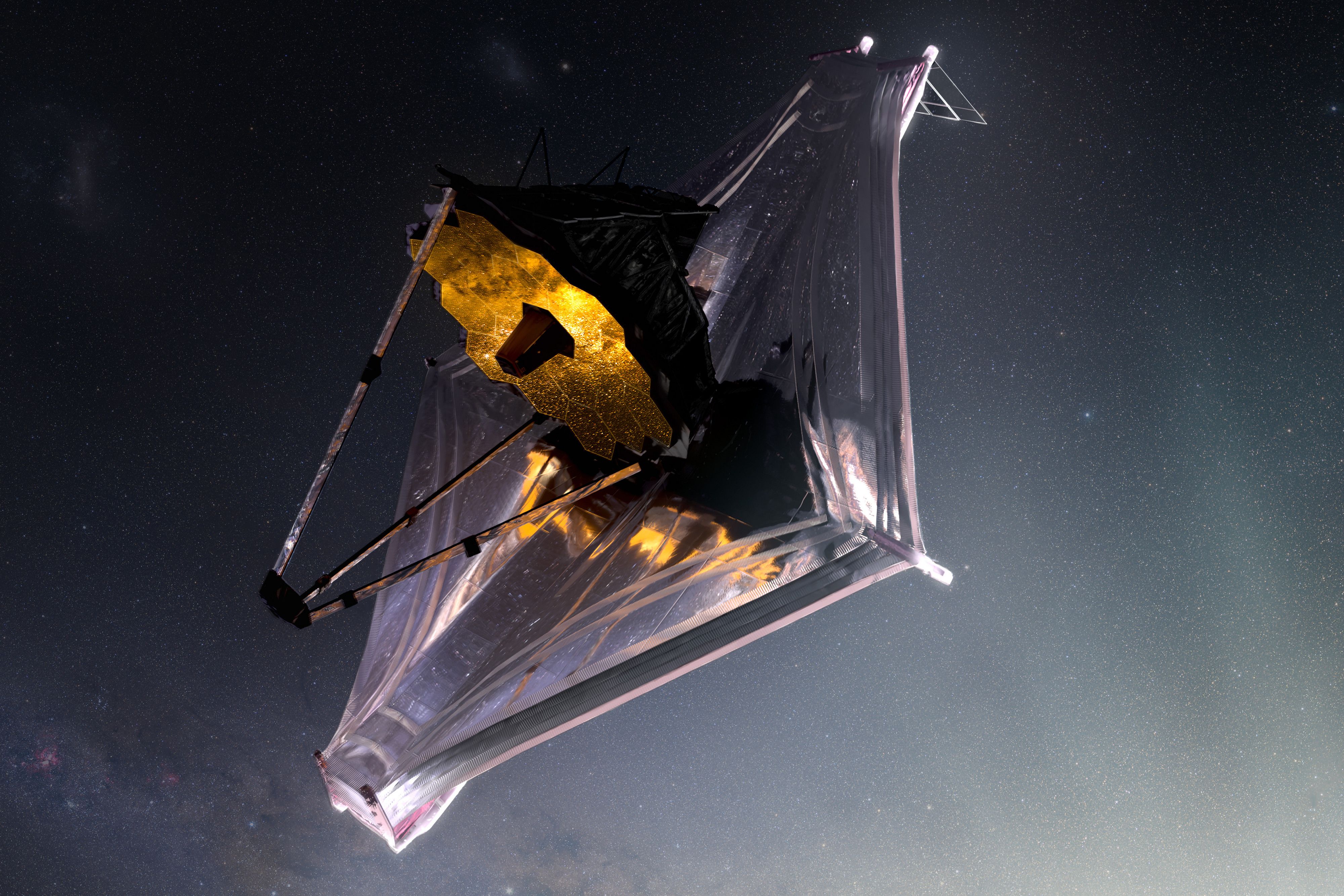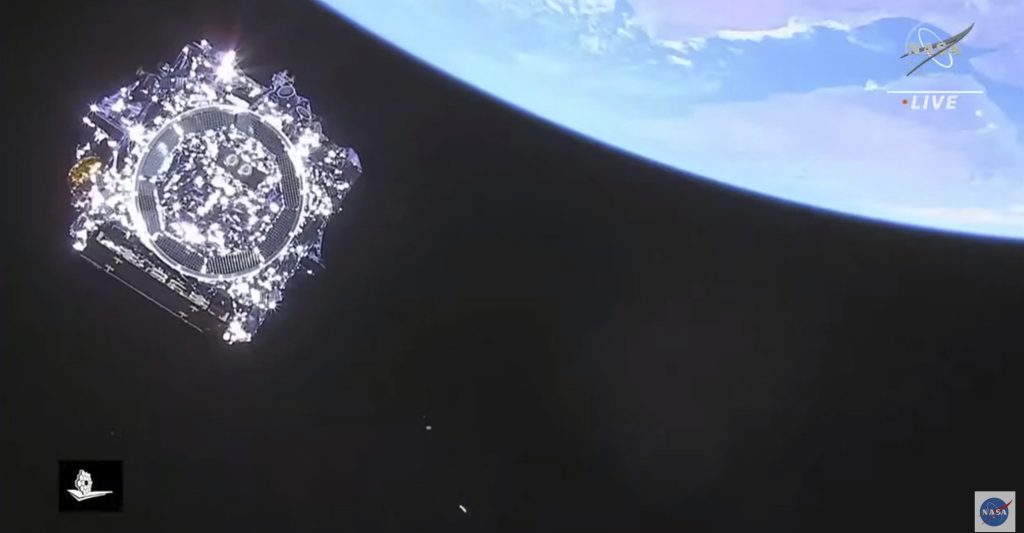Now the James Webb Telescope is on its way to orbit around the sun. However, many crucial moments remain for the telescope before it gives us answers to the universe’s main questions.
Just after 1 a.m. on Christmas Day, the James Webb Telescope was launched from French Guiana in northeastern South America. Webb will look at the universe more than any previous telescope, thus looking back in time.
From a tropical rainforest to the beginning of time. James Webb is now beginning his journey to the birth of the universe, Rob Navias, a NASA commentator on rocket launches, said in a live broadcast of the launch.
Webb fell folded into the top of the Ariane 5 rocket. The launch took place according to plan, and then the rocket followed a predetermined path. 27 minutes and 7 seconds after launch, Webb detached from the rocket. A camera placed on the rocket filmed when Webb sailed into space alone, these will be the last images on the space telescope.
Shown here is the James Webb Telescope emerging from an Ariane 5 rocket. Photo: NASA/TT
The last time-critical step has been completed
Soon after Webb launched from the rocket, the telescope’s solar panel was lowered and the telescope was confirmed to be powered. The telescope will now travel 1.5 million kilometers to the second storage range (L2) point where Webb will be in orbit around the Sun.
– This is a wonderful day, not only for the United States and our European and Canadian colleagues, but for the planet. But now we must realize that there are still a myriad of things that need to be working, and they should work perfectly,” NASA Administrator Bill Nelson said during the broadcast.
Now the complex development of the folded telescope is still ongoing. During the flight towards L2, the large heat shield, which consists of five thin layers of kapton, and mirrors are released and folded outward. Kapton is a polymeric material developed during the 1960s that has properties that are stable over a wide range of temperatures.

Illustration of a telescope. Photo: NASA/UPI/Shutterstock/TT
The engine corrected the path
Just before 2 a.m. on December 26, the Webb trajectory correction engine started, NASA wrote in press release. The correction, which took 65 minutes, was time-critical and was not allowed to begin earlier or later to properly aim the telescope. According to NASA, the remaining steps, such as the development of the mirrors, are not time-critical and their order may change.
via Nasas website You can follow the telescope’s travel and get the latest updates. Read more about Webb’s journey and the different steps in developing the telescope here.
https://www.youtube.com/watch?v=GBJdszEMXTQ
James Webb key information
The web will examine light from the early universe. By measuring wavelengths in and near the infrared portion of the electromagnetic spectrum, Webb can look back in time. The instruments should be able to look back 13.5 billion years to form the first stars and galaxies.
Studies of the early universe will allow astronomers to compare early galaxies with today’s large spiral and elliptical galaxies. Hopefully, this will give us an understanding of how galaxies form and evolve over long periods of time.
By observing in the infrared spectrum, Webb, unlike Hubble, can see through massive particle clouds to be able to explore regions where planetary and star systems are born. It will give us more information about how these processes work.
Webb will also examine the atmospheres of exoplanets for the building blocks of life. The telescope can also be used to study objects and planets within our solar system.

“Unapologetic writer. Bacon enthusiast. Introvert. Evil troublemaker. Friend of animals everywhere.”







More Stories
More than 100 Republicans rule: Trump is unfit | World
Summer in P1 with Margrethe Vestager
Huge asteroid approaching Earth | World